The guide to conversion rate optimization: how to test hypotheses and what practices to follow
When you offer products or services on a website, you want to attract as many target users as possible. Increasing the number of users who perform a desired action is called conversion rate optimization (CRO).
Major SEO efforts overlap with CRO principles because they both strive to learn about target users and provide a great user experience. While SEO metrics revolve around organic traffic, CRO is about putting the received traffic into efficient use. It’s important to combine both in a user-centric way—obtain higher search engine rankings and conversions with the understanding of what drives a rewarding user experience.
Conversions that are analyzed and optimized are divided into macro-conversions and micro-conversions. The former include a purchase or subscription (your major business goal), and the latter involve creating a free account, submitting a form, adding an item to a shopping cart, etc. (activities that show interest in website’s offers but don’t directly convert users into new customers). The practice of CRO is aimed not only at boosting the quantity of these actions, but also at increasing your Average Order Value and Customer Lifetime Value.
Why CRO is important
Although getting conversions doesn’t directly influence your rankings in search, CRO practices do help with SEO. Optimizing pages for improving conversion rates benefits you in the following ways:
- Customer insights. CRO marketing experiments provide insight into what drives your visitors to take a desired action and what prevents them from taking one. Your own experiments give a much deeper understanding of your target audience than someone else’s “best practices,” even if they’ve worked well for your competitors.
- Higher ROI. CRO can help you achieve your business goals quicker and profit more from pages and campaigns you already have.
- Improved user experience. By learning how to make user journeys on a website more convenient and identifying obstacles that users might face, you’ll be able to provide a better UX overall, which is beneficial for rankings as well.
- Customer loyalty and trust. An action that converts requires users to leave their personal information (such as an email or credit card and shipping details), so when they share their information, it means they trust the website and are likely to return.
Increased traffic vs. increased conversions
While SEO is meant to bring you more traffic from the search, traffic alone doesn’t bring you any closer to reaching your business goals. Traffic is an important metric because it shows how visible your pages are in search engines, along with how trustworthy they are, however it doesn’t translate into conversions. To increase your conversion rates, you need to get as much qualified traffic as possible—i.e. attract those people who might really need what you’re offering—and attract your target audience with the right words, a compelling design, and easy navigation.
What is a good conversion rate?
For starters, let’s see how conversion rates are calculated. The number of times users take desired actions (i.e. conversions) is divided by the total number of website visitors. For example, if your landing page had 500 visitors last month and 15 of them signed up for a free trial, it would mean that your page’s conversion rate is 15 divided by 500, which is 0.03, or 3%.
A conversion rate of 5% or higher is already considered good in many industries, and according to WordStream, 25% of landing pages have such results. In contrast, the top-performing 10% receive conversion rates of 11% or higher. But that’s only one source of research. The number of conversions you should aim for largely depends on the industry. For instance, ecommerce websites receive 0.6-5.5% on average, and the narrower the niche, the lower conversion rates are. Consequently, fintech websites are struggling to get more than 0.1% on average, according to a Littledata survey.
Don’t focus on the numbers if they’re not coming from research pertaining to your particular market. See how your major competitors are doing in terms of conversions and think about how you can get more.
How to optimize for conversion rates
The CRO process revolves around creating hypotheses of what might work and testing them to find out if they are true. But before hypothesis formation, you need to gather data about how many conversions you currently have, how visitors interact with your pages, and what convinces them to convert.
Research
You can collect both quantitative and qualitative data about your visitors’ behavior. Sources of valuable data include:
- Website traffic. Check the pages you want to optimize in Google Analytics: how many visitors they receive and who your users are (demographics, interests, most popular devices), etc.
Google Analytics also has a section dedicated to conversion goals: there, you can track how many conversions different pages receive, what sources of traffic bring users who convert, what regions these users are from, etc.
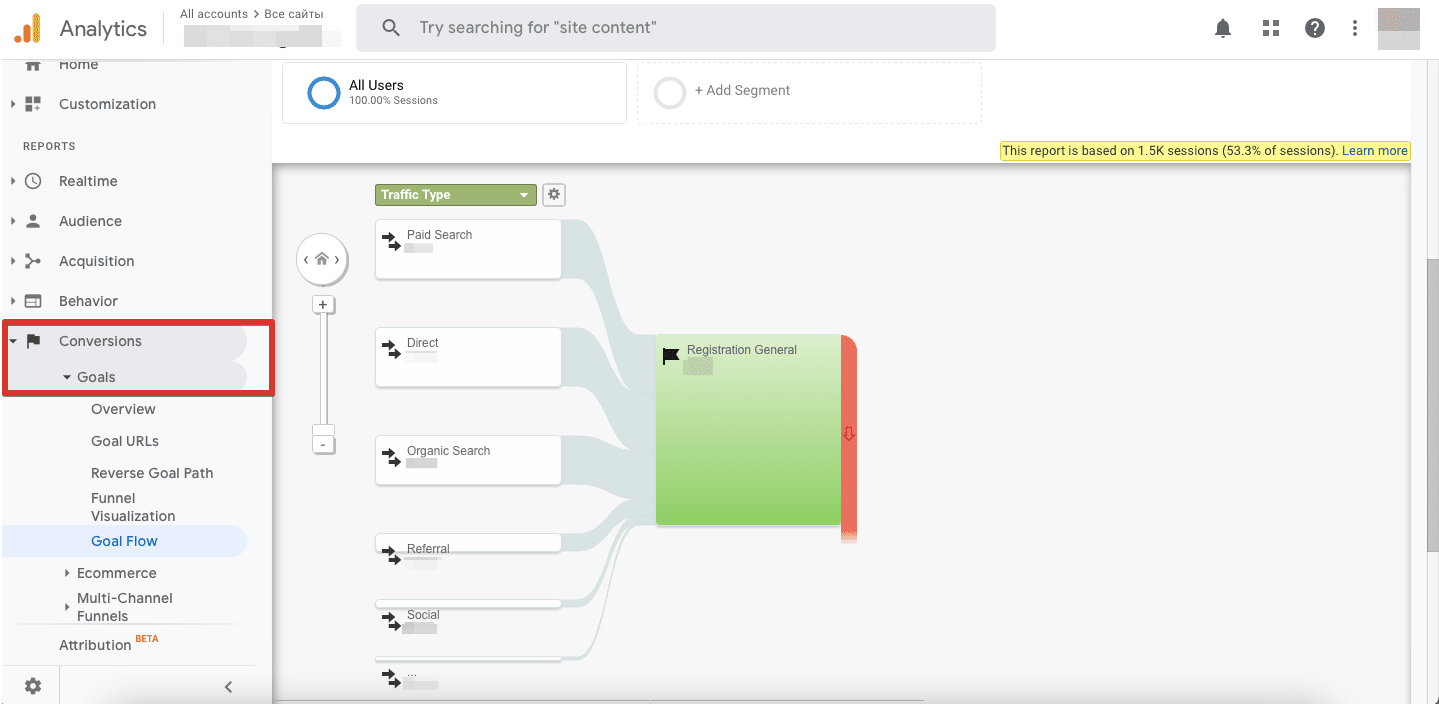
- Actions taken on a page. Heat maps like Hotjar or Crazy Egg can help you visualize how users interact with your pages and show the number of clicks or other actions performed by visitors.
- Sales funnel stages. If you’re using tools that track how users move from one stage of the sales funnel to the next, it will help you understand when users drop off and when they successfully convert.
- Real user feedback. There are many ways to collect feedback: you can ask users to take a short survey right after they read something on your website or perform an action; you can arrange interviews with existing leads and customers asking them to share what they like and dislike when interacting with your website; you can also find something valuable in the reviews left for your products or services.
The most important things to research during this stage is what brings people to your website, what pushes them to act, and what stops them from converting.
Hypothesis
When you have all this information at your fingertips, you can identify the biggest issues stopping conversions. For instance, you can see that visitors only read the first half of your page’s content and then lose interest. Or, they may not click on your side banner. Analyze anything you can find and come up with a hypothesis of what might bring an improvement. Perhaps changing the headings on a page or redesigning a banner would work to increase conversion rates—this could be your hypothesis.
Then, define the scope and timeline for each hypothesis testing.
Testing
There are several ways to test if the hypothesis is true and determine if the change you made to your page brings more conversions:
- A/B testing. The most common way of validating a hypothesis is split testing—showing the old version to 50% of visitors and the new version to the other 50%. You can also test more than one alternative version against the original (A/B/n testing), but it will take longer to conduct the experiment because each version takes a long time to receive the amount of traffic significant enough for analysis.
- Multivariate testing. If you want to test more than one element at once, you can create different combinations. This would work well if, for example, you were planning on testing 3 new CTA designs and 3 new page headings.
There are a number of tools for hypothesis testing, including free ones like Google Optimize. Tools might differ in the method they use: frequentist inference or Bayesian inference. They are both based on deriving predictions on a large enough sample (the amount of traffic sufficient for making observations), but the latter incorporates new data as soon as it becomes available.
Here’s how the data on a/b testing is visualized in the Optimize tool:
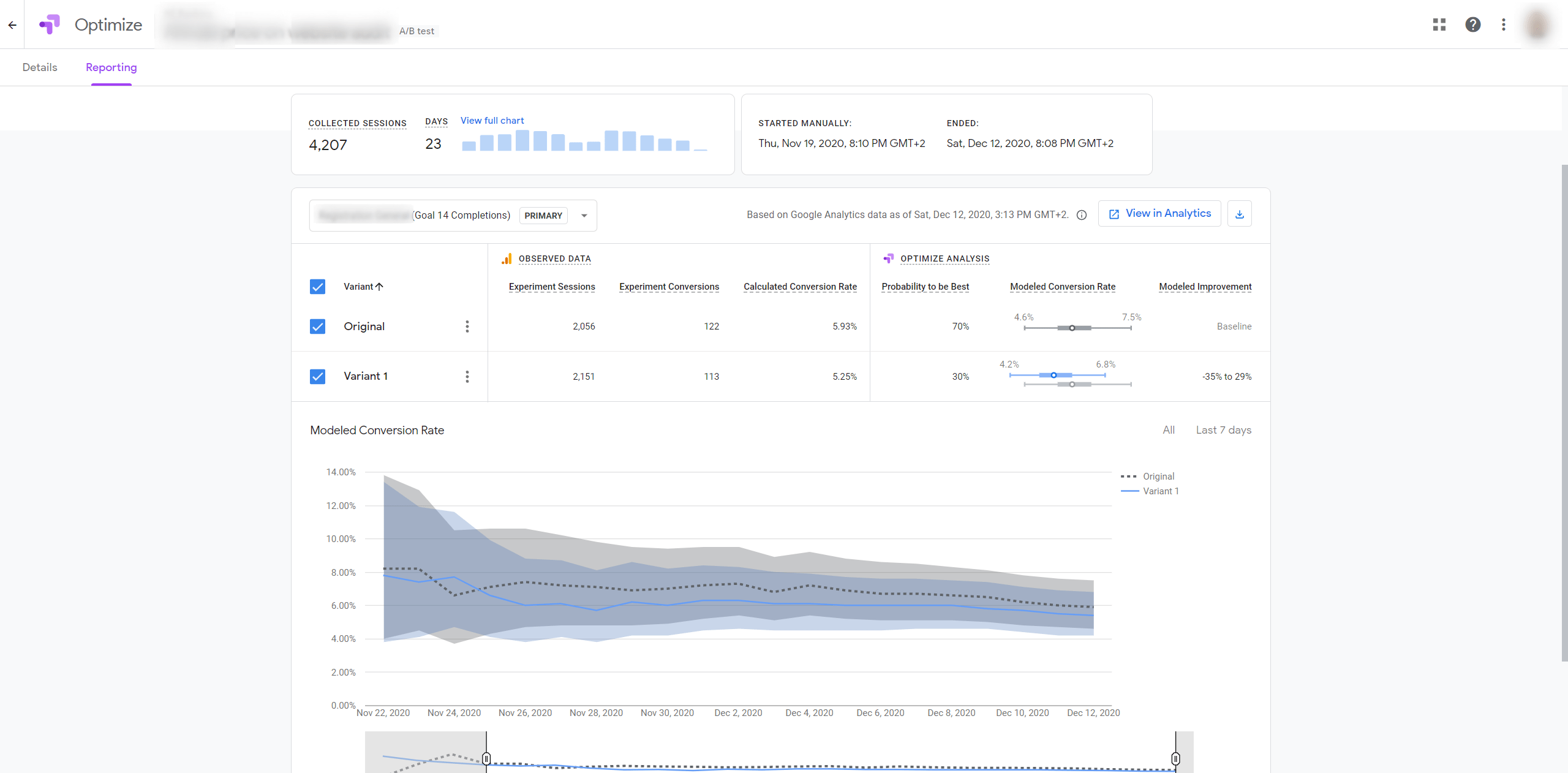
You can implement changes that could improve the conversion rate without testing and then analyze if the tweaks worked after a given period of time, but this approach causes more uncertainties. However, if the roadblock stopping people from converting is an obvious technical mistake (a certain field doesn’t work, a page crashes, etc.), then you should fix it right away and release the update as soon as possible.
How long should conversion optimization experiments run?
To define the timeline for your testing, you should know your sample size, which is the number of visitors that will produce a statistically sufficient result. Many A/B testing tools offer easy-to-use sample size calculators in which you enter your current conversion rate, the minimum change in conversions that you want to detect, and the percentage of statistical significance that you have decided upon.
When you know the sample size for your CRO test, you can determine how long the test will take to finish. Multiply the sample size by the number of variations, and then divide the result by the number of visitors per day, and you’ll receive an estimate of your test’s timeline.
Say, your sample size is 20,000, and you get 5,000 daily visitors on average—it means that for a split testing (of two page versions), you’ll need at least 8 days to get insightful results.
It usually takes several weeks to test a hypothesis, but in some cases, you might get significant improvements in just a week. For instance, Autopilot increased conversions to 26% in their ad campaigns in a week after creating new ads based on ad groups.
Analyzing the results
Check the data in Google Analytics to understand if you’ve gotten closer to achieving your goals. You can also view this data in SE Ranking—the Analytics & Traffic module allows integrating GA and analyzing your progress towards set conversion goals:
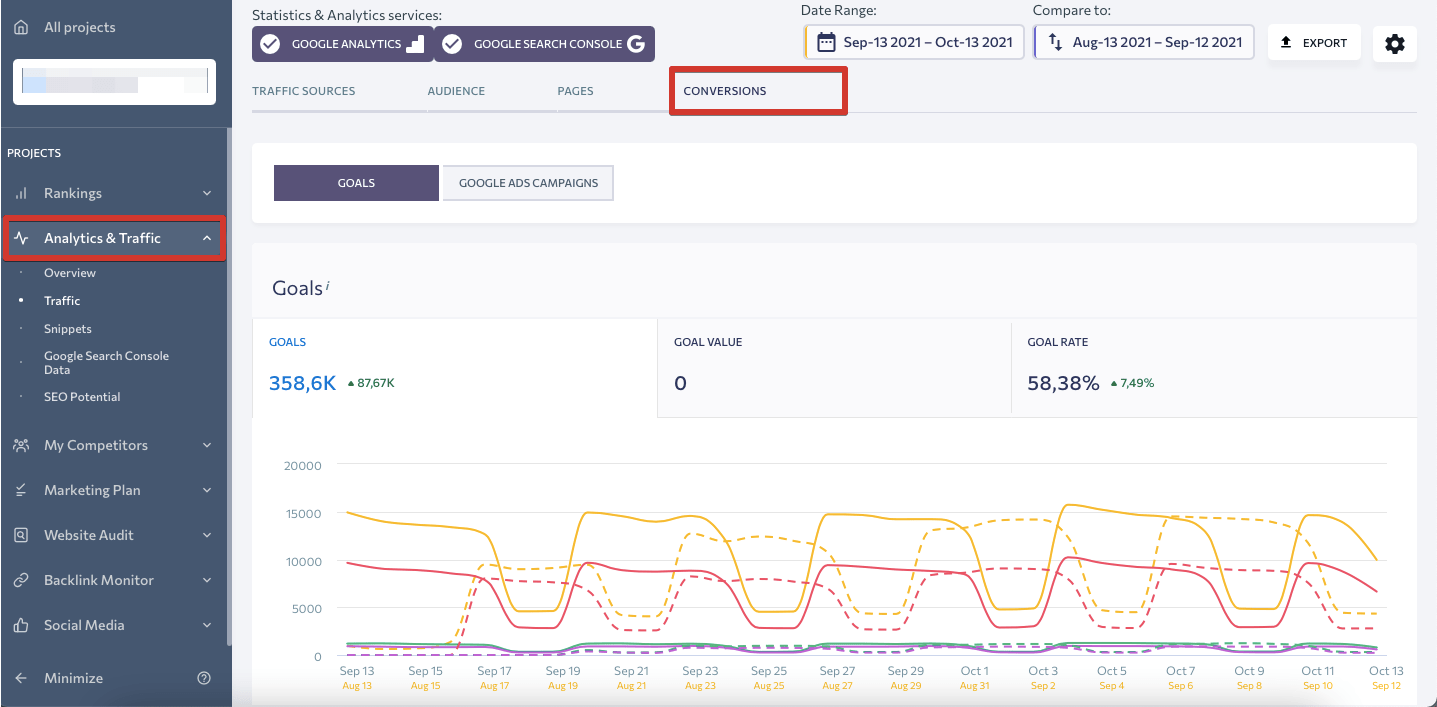
In addition to tracking if a hypothesis is right and if the changes you’ve made bring higher conversions, there are a lot of aspects to consider in post-testing analysis: for example, how the conversion increase correlates with the profit increase, how qualified the newly generated leads are, on what segments of users (devices, browsers, locations, etc.) your changes worked best, and so on.
If it turns out that a hypothesis isn’t right and you don’t exceed your baseline conversion rate, then you merely learn what doesn’t work with your audience and try to hack conversions in a different way.
Proven CRO practices
What your CRO hypothesis will be about depends on your particular website and the goals you pursue. But there are certain tricks that are generally recognized as helpful for increasing conversions.
Checking the page speed
If a page doesn’t perform as well as you would want it to, maybe the answer is simpler than you think. The offer and messaging might be right on point, but they won’t convert if a page doesn’t load the content fast enough for users to interact with it. Evaluate your pages against Core Web Vitals to make sure there are no issues with the loading speed and layout stability.
Assessing the structure
Another fundamental part of getting conversions is effective website structure and navigation. If it’s not clear how to move between the sections of your website, then conversion funnels might not work. Re-evaluate the process from the user’s perspective: how many steps do they need to take to find the right content and perform a converting action, is this process easy and short enough, etc.
Changing the flow
There are two opposing opinions on optimizing conversion funnels. On the one hand, you’ll see many experts suggesting to reduce the number of fields and make the process of submitting a form, subscribing, or registering an account as short as possible. On the other hand, advocates of the Breadcrumb Technique claim that to convert at a higher rate, you need to add more steps and fields engaging users with questions.
For instance, the insurance provider Lemonade asks a lot of questions before allowing someone to create an account—but it engages the users and doesn’t make the process overcomplicated.
First of all, every blog post comes with a customized CTA: if it’s an article dedicated to pets, then a CTA will be centered around pet insurance:
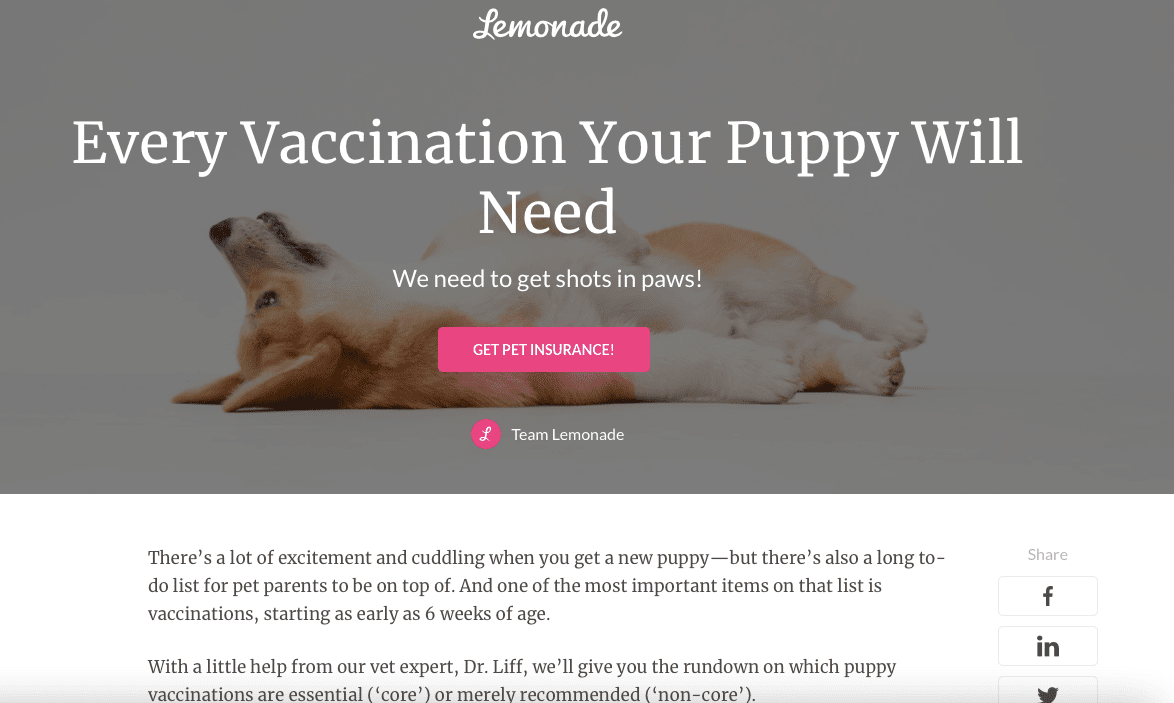
Then, a virtual assistant asks a series of questions which establish trust and create the feeling that the company cares about your insurance needs:
[/slider-single]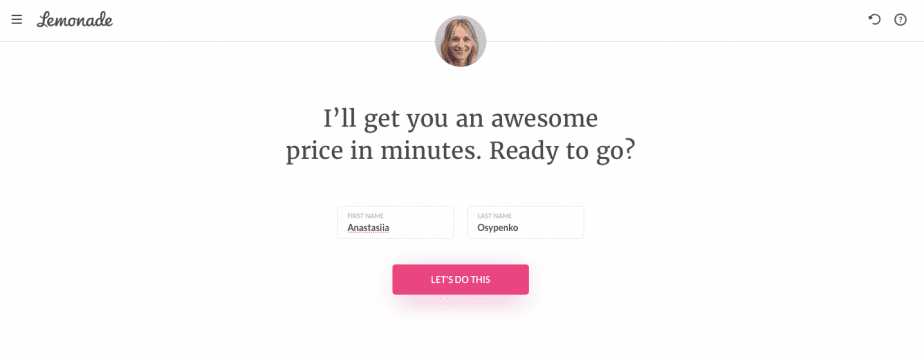

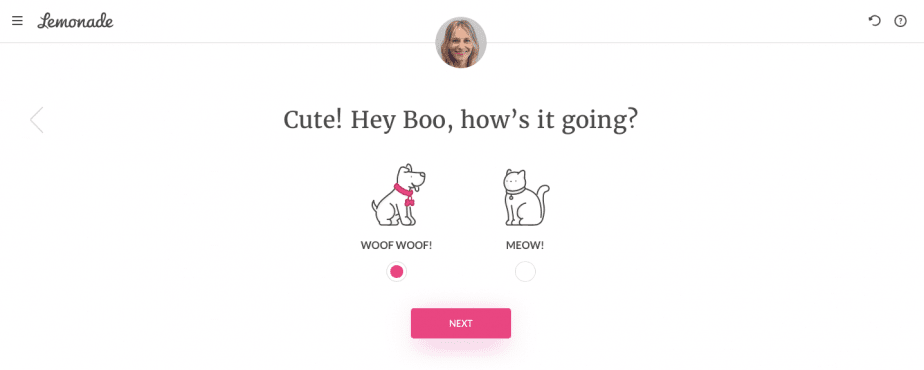
The website builder Squarespace also offers a multi-step survey before setting up an account. The service asks about the website’s topic and goals and shows templates that match particular user needs. Plus, users can browse these templates and adjust them—and only after that register an account and input their personal information.
[/slider-single]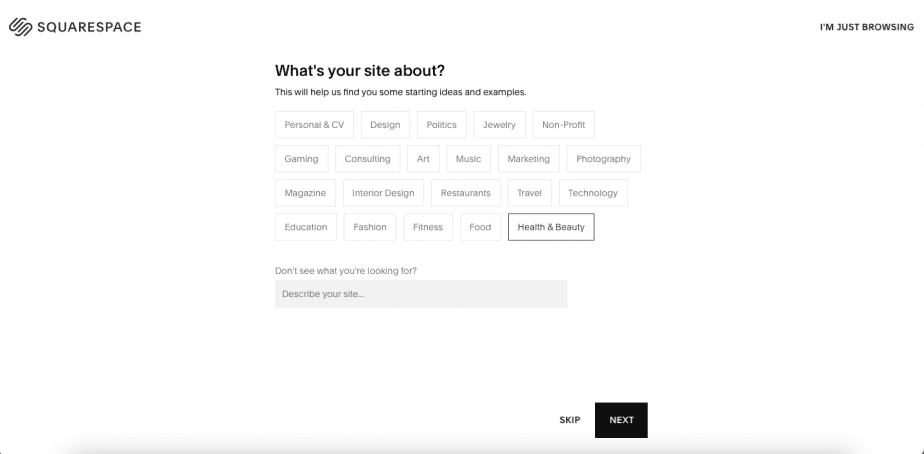
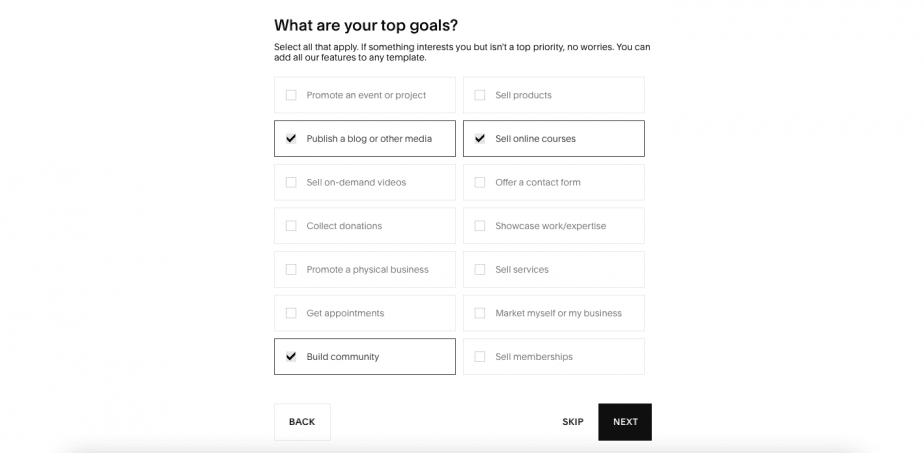
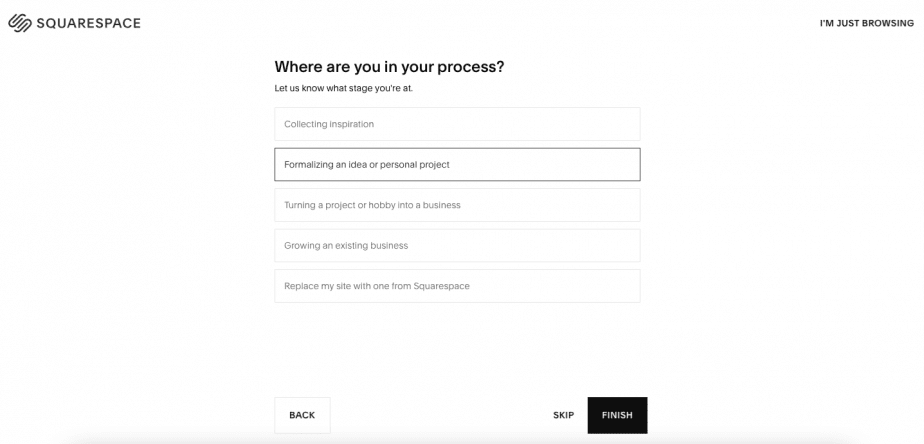
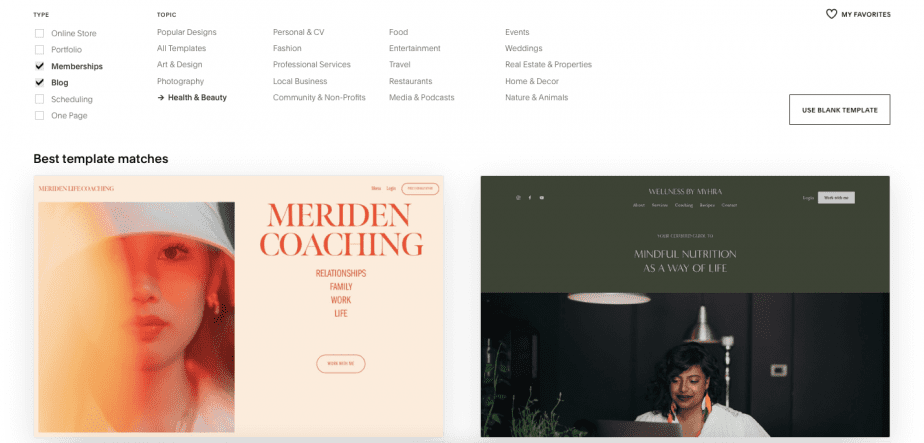
If it works for your niche—don’t be afraid of asking too much, it might have the effect of engaging users.
Creating an additional offer
Sometimes you need to come up with some additional value on your page that will motivate visitors more than a compelling page copy and CTA button. In the B2B domain, it’s always a good idea to offer something on top of a free trial, like a resource that provides users with real insights based on their data.
Analytical data based on user input
For example, WordStream discovered it to be very successful conversion-wise when they incorporated a free Google Ads account evaluation report in addition to a free trial. SE Ranking doubled its conversion rates for the Website Audit landing page by redesigning it to feature the user input—a possibility to analyze any domain in the tool right from the landing page:
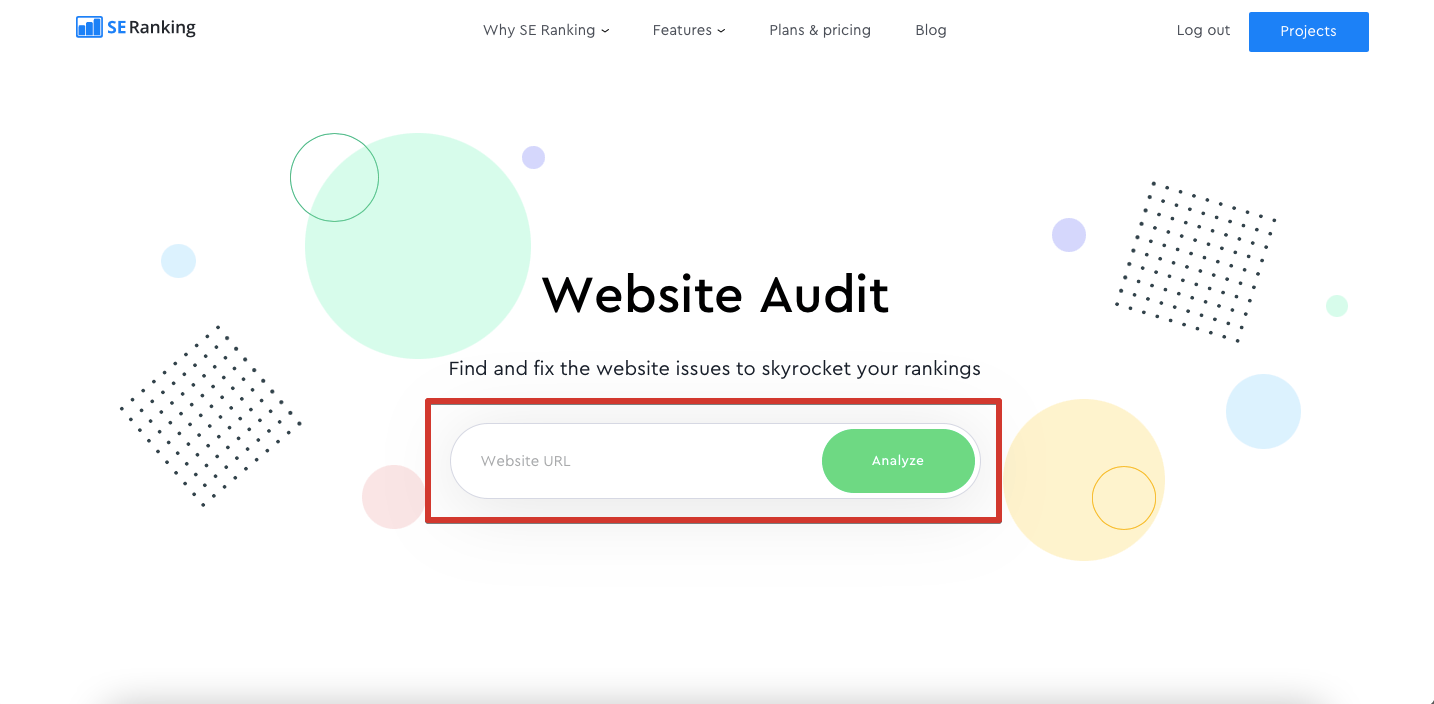
Pop-ups with promo codes or downloadable content
You can also add a converting pop-up with an additional offer: an ebook dedicated to an issue related to the page’s topic, a promotional code for certain types of orders, and so on. Many businesses saw an increase in conversions after offering downloadable content that relates to what the page is about. For instance, HubSpot boosted their conversion rates for an article about press releases by 240% after adding a press release template to it, and Backlinko experienced a 785% increase in conversions overnight after offering a free checklist as a bonus on a post about ranking factors.
Sometimes, companies even provide downloadable content without asking a user to leave their email address. For instance, Salesforce’s CRM Handbook can be accessible without providing any personal information:
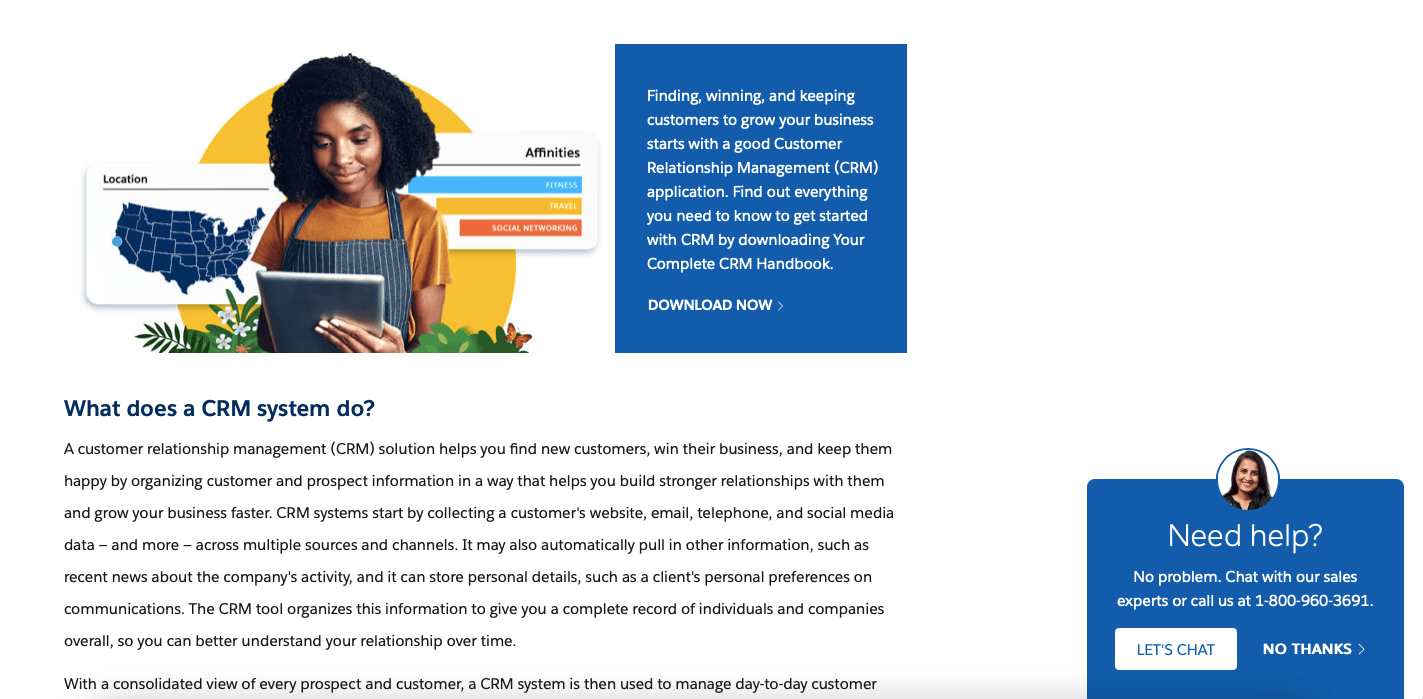
Salesforce takes users to an interesting and clear-cut page that shows “next steps” before transferring them to a .pdf file:
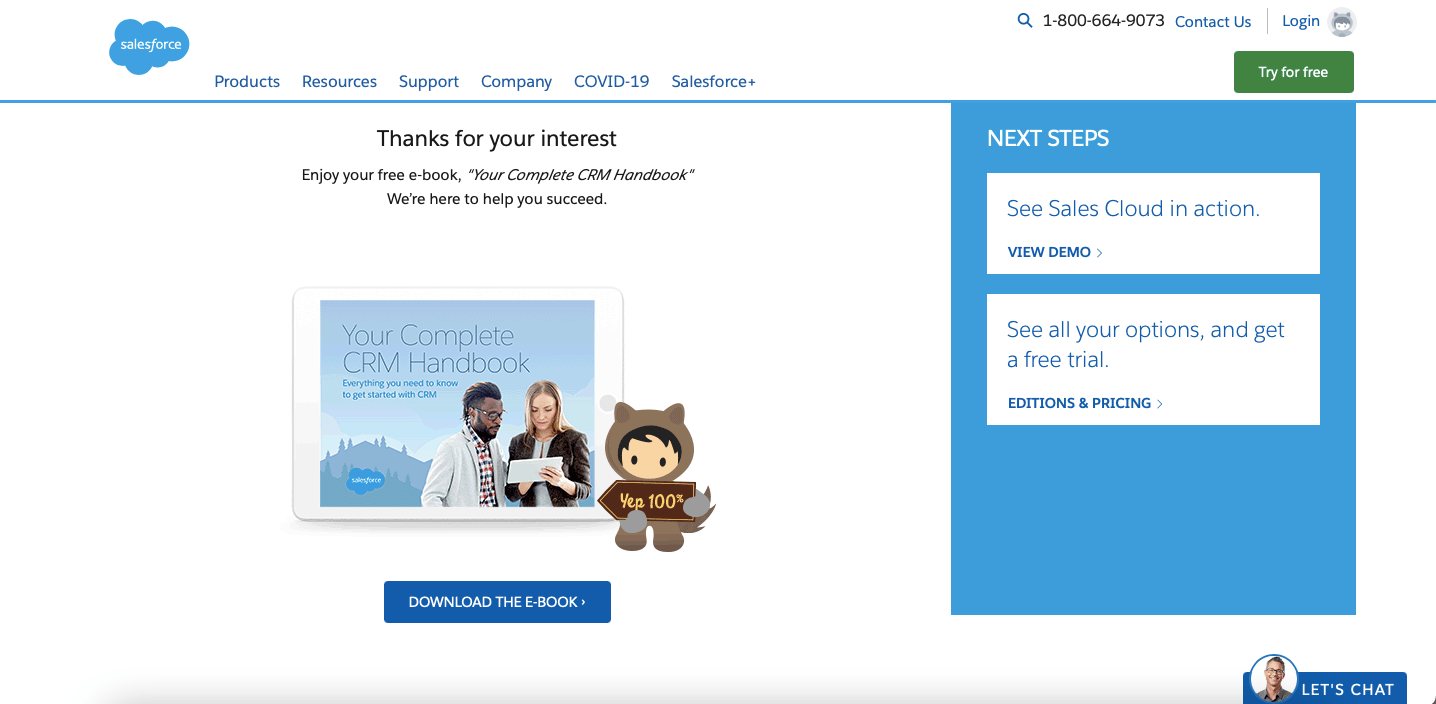
Live chats
You can also add live chats to your top-performing pages so that users feel more encouraged to get answers to questions they have. A survey by Invesp shows that almost 80% of consumers prefer making a purchase when there’s a chat support option available, and more than 60% are likely to return to a website that features live chat.
Chatbots can also be helpful with some typical questions about products or services:
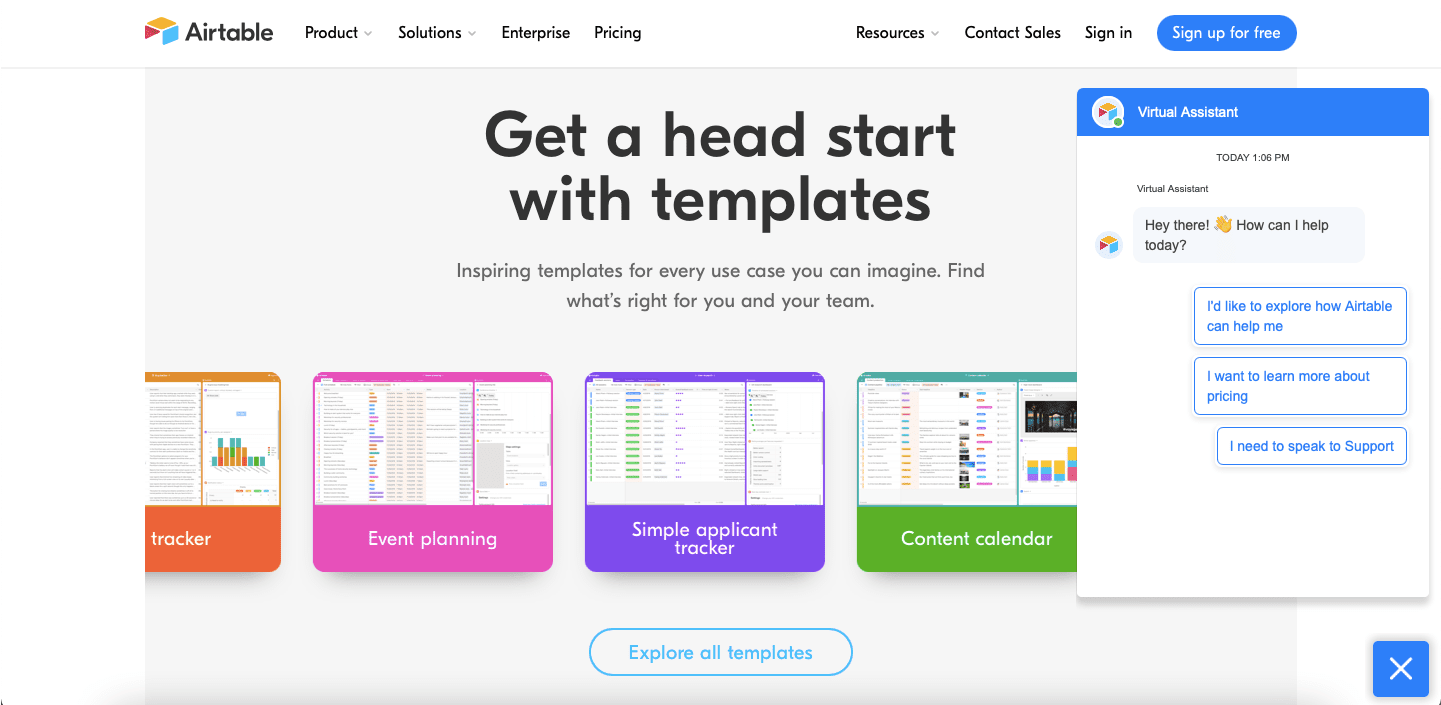
Testimonials
Testimonials and reviews play a vital role in attracting new customers. Consider putting a relevant customer’s quote or logos of the companies that you cooperate with at the top of your page:
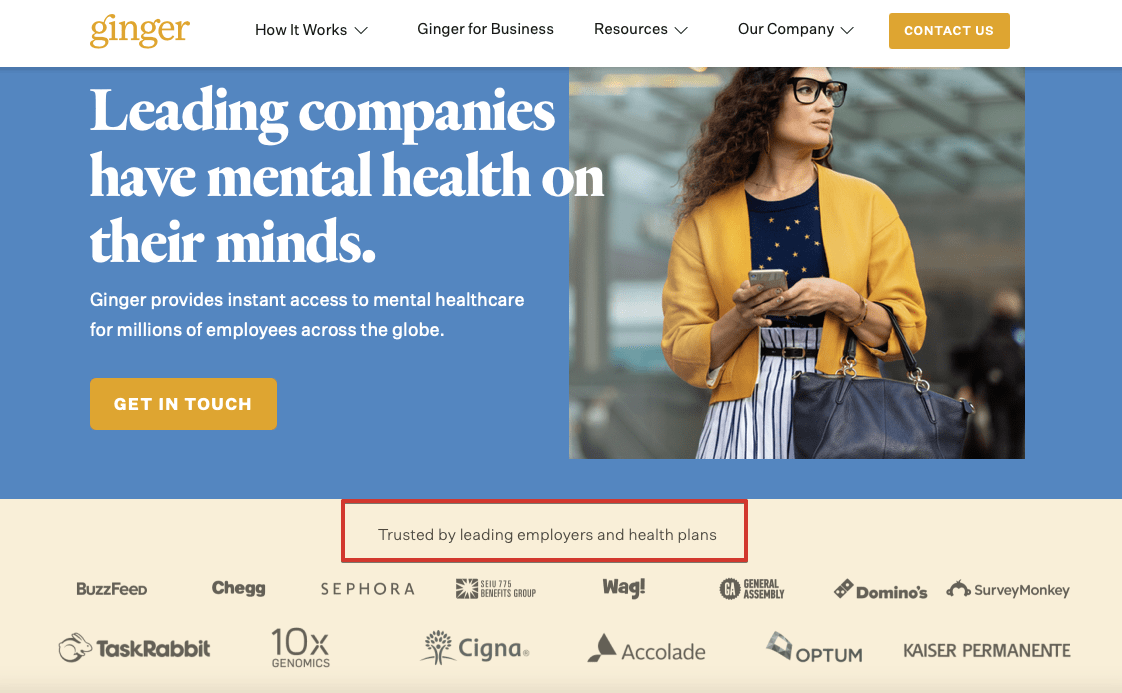
Experiment with the ways you want to present an offer on a page and find out what brings the highest number of conversions. If a new element doesn’t perform well, think about changing the page copy or design completely.
Redesigning a page
In some cases, it makes sense to change the page layout or visuals. For example, if you used stock images to quickly launch a website, you can rethink the use of visuals and order custom illustrations or photos that tell more about your products or services. Or, you can redesign a website completely and change its structure, colors, icons, and overall look.
You also might experiment with the colors of page sections, text, and CTA buttons—the buttons should be distinctly visible but correspond to your brand’s color set. You may notice that green, blue, and red are the most common colors used in CTA design, but any color might work if it matches your website style.
If you have multiple CTAs close to each other, explain how they are different and who might need which one the most. For instance, the no-code platform n&n makes three types of installation distinguishable and comprehensible with the help of arrows and additional text:
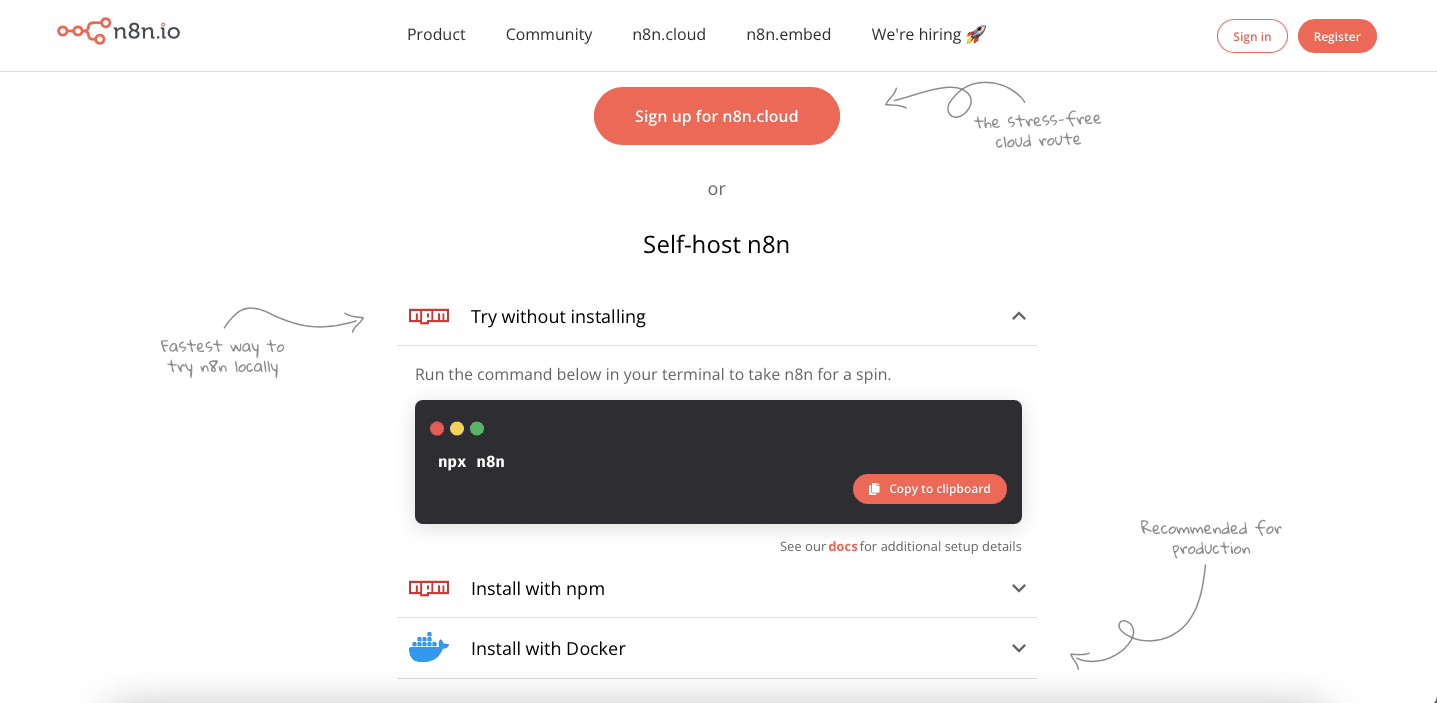
Reducing friction and eliminating distraction
If you discover that some particular element on a page is distracting users, then remove it. The page shouldn’t be cluttered with content, pop-ups, and CTAs, and it shoudn’t disturb visitors with aggressive combinations of colors.
Don’t be afraid to leave the space around your offer empty, especially when it’s connected with your brand’s purpose. For example, Evernote’s encouragements to “unclutter lives” looks natural not surrounded by any other elements:
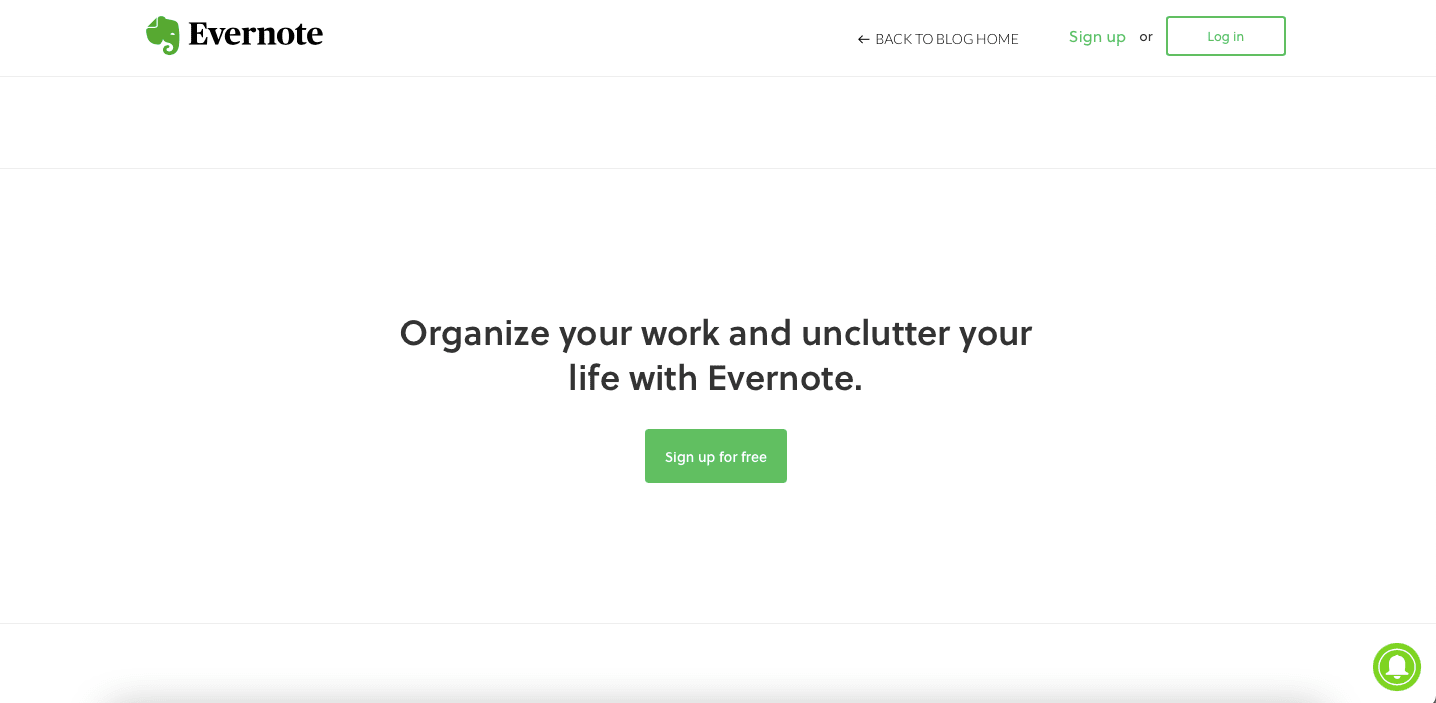
Changing elements on a page
For some businesses, changing a headline on a page is enough to boost conversions, but more often than not, you need to be creative and dig deep into how to improve conversion rate and grab users’ attention.
Even so, it won’t hurt to look at your headlines or CTA copies from another angle. High-converting headlines often incite curiosity and contain powerful words that trigger an emotional response. Effective CTA buttons, in turn, need to be very distinct on a page and feature a compelling and clear copy.
You can get creative with your CTA copy and write something original instead of using the default “try now for free.” For instance, the writing assistant Rytr appeals to its own brand name in a wordplay CTA:
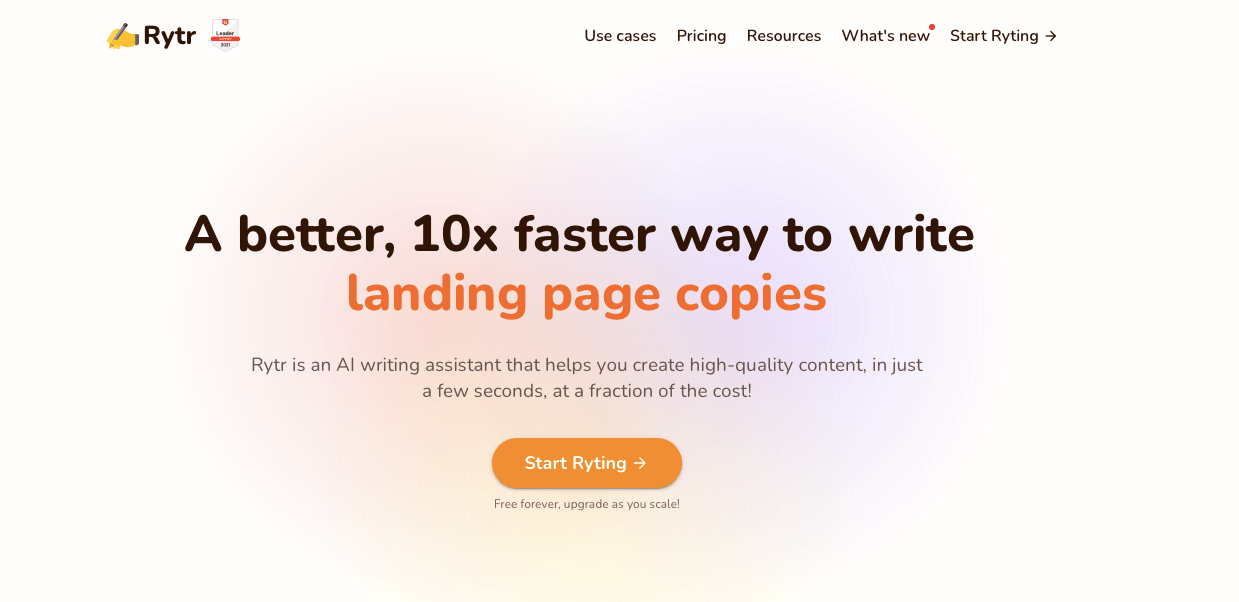
For some businesses, it makes sense to trigger urgency in their offers:
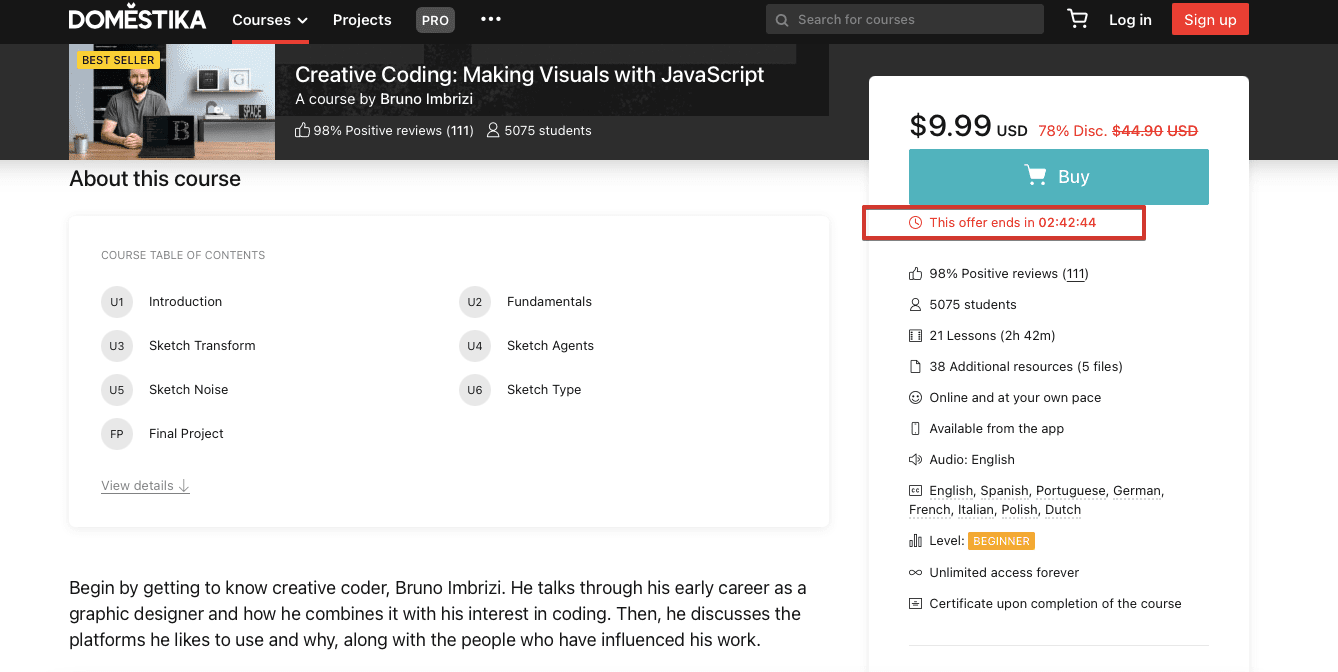
Or, add a pop-up telling visitors that someone has just purchased a product there:
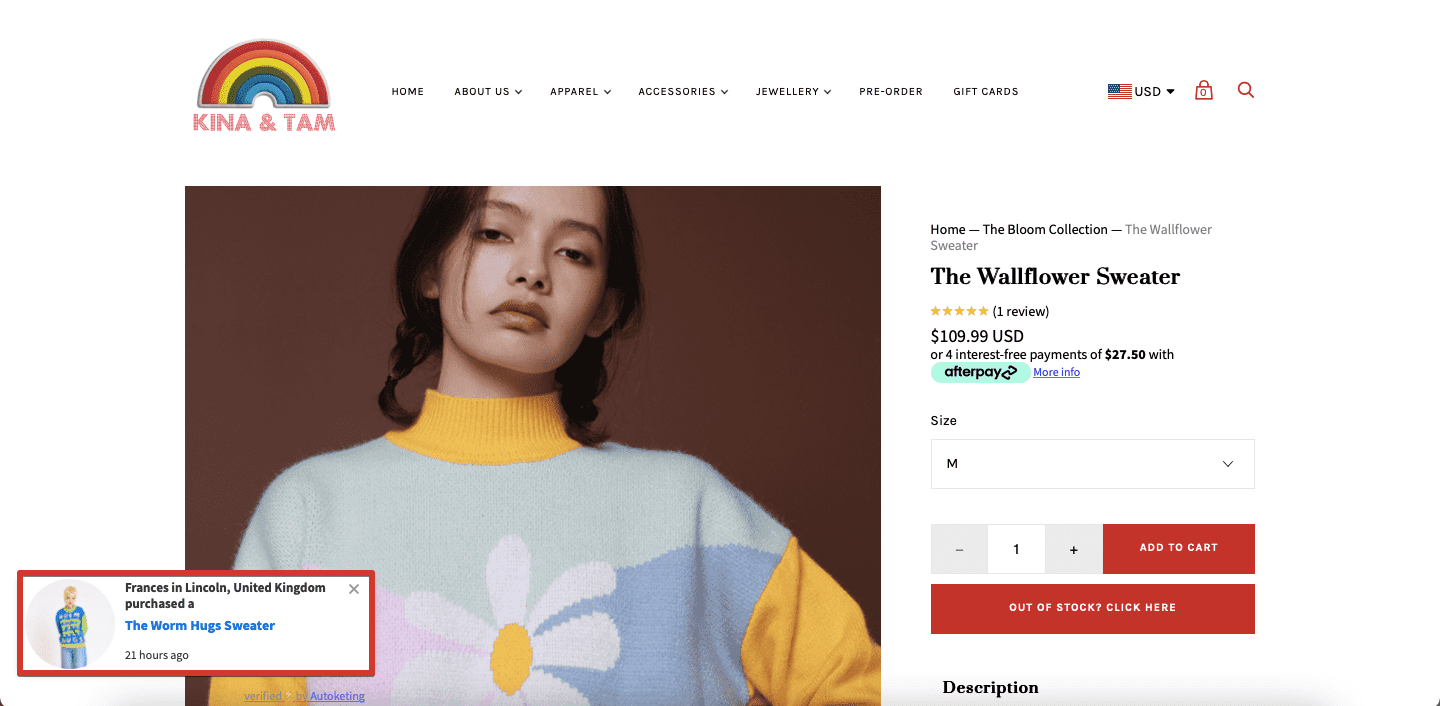
Even a small element like that can greatly boost conversions.
Reworking the copy
At the end of the day, the quality of your content is responsible for conversions. If the page is not informative or persuasive enough, you won’t get new customers. Evaluate your content and find out how you can improve it.
How CRO marketing differs for SEO and PPC
The most important thing in an effective PPC campaign is the page itself. Optimizing a page that you’re running ads for should be your first concern. By experimenting with CTAs, page copy and design, you’ll be able to increase conversions both within your search optimization and PPC campaign.
What’s different about increasing PPC conversions is that you also need to create a relevant ad copy and choose the right keywords and keyword match type so that your ad is shown to all suitable queries.
Improving your Ad Quality Score also helps with conversions, and this score depends on all the important parts of your campaign: expected CTR, correlation between the ad and the user intent, and the web page’s relevance, design, and navigation. Ad copy optimization is intertwined with page optimization so if you make successful changes, you’ll likely get both higher conversions and higher rankings.
Experiment, test, convert
Conversion rate optimization is not just a process aimed at bringing you more customers and bigger profits. It helps you to grow your business, understand your target audience, and polish your web pages and sales funnels so that they better align with users’ needs. CRO is helpful for rankings because it adheres to the major principles of what SEO is built on: it helps design an excellent user experience and provide value to users.
Never stop experimenting with your pages and interpreting the results based on analytical data—this is the right path to follow to make your offers more attractive and converting.


